Learn how to make delicious homemade blueberry orange jam from an easy recipe. Use fresh or frozen blueberries to make this unique orange blueberry jam combination. Get the simple directions for this flavorful jam (some might call it blueberry orange marmalade) as well as tips for having a no-mess, successful canning experience. Read on for the ingredients, step-by-step instructions for this delicious blueberry orange jam with pectin. It’s like sunshine in a jar!
Table of Contents
My Blueberry Orange Jam Backstory
My family is such a fan of the blueberry lime jam I make, I decided to try making blueberry jam with lemons and with oranges. I am a huge fan of citrus-flavored anything (see my recipes for preserved lemons, lemon garlic roasted chicken, rhubarb orange jam, orange-glazed pork chops, chocolate orange truffles, and a whole party with the lemon theme). To make this blueberry orange jam with pectin, I was inspired by my raspberry blueberry jam, which calls for oranges as an ingredient. After some experimenting, I now have the recipe ready to share with you. Let’s get started!
Blueberry Orange Jam Equipment
When canning, it’s best to have your equipment set out ahead of time because some of the steps are time-sensitive. Here is the equipment you need to assemble beforehand:
8 half-pint canning jars, lids, and bands
A large boiling water bath canner
A Microplane zester (optional, but it makes grating the zest a breeze)
A mini chopper food processor (optional, but much less messy for chopping up the oranges)
A colander for rinsing and draining the blueberries
A small metal saucepan with a lid (for heating the jar lids)
A large, non-reactive stockpot (for mixing the jam)
A set of canning tools (optional, but these sure have made canning easier)
Large ladle and wooden spoon
Blueberry Orange Jam Preparation
Set eight canning bands (some call them rings) aside, near where you will be filling the jars.
Place the eight glass jars in the water bath canner. The water should cover the jars by at least an inch. Turn the heat to medium-high.
Place eight jar lids in the small saucepan with enough water to cover the lids. Cover the pan and heat the water on low. Now it’s time to make easy blueberry orange jam!
Blueberry Orange Jam Ingredients
5 cups fresh or frozen blueberries
6 1/2 cups granulated sugar
2 medium-sized seedless navel oranges (to make 1.5 cups chopped oranges and zest)
2 tablespoons lemon juice (fresh or bottled, either is fine)
1 1.75-ounce box of powdered pectin
Blueberry Orange Jam Instructions
Wash 8 half-pint canning jars. Keep hot until needed. Prepare 2-piece canning lids as manufacturer directs.
Measure out the sugar in a mixing bowl so it will be ready to add to the blueberry orange jam mixture all at once when needed.
Measure out the fresh or frozen blueberries in a colander. Rinse and drain.
Mash blueberries in a large, non-aluminum pot and set aside. I like to use a masher shaped like this one, so the blueberries do not get caught between the masher slots. It was given to me years ago by a dear friend who has now passed. I think of her every time I use it.
Using a zester (my favorite is this one, by Microplane), zest the two oranges and add the zest to the blueberries in the pot.
Be careful not to zest the white pith underneath the outer rind. Peel the oranges, discard the peels, and finely chop the orange pieces in a food processor. Use the pulse setting. I like to use my electric mini-chopper for this little job.
Measure 1 and 1/2 cups of the orange pulp and add it to the pot containing the mashed blueberries. If you have slightly less than 1 and 1/2 cups, that’s okay.
Add the powdered pectin and lemon juice to the pot, then bring to a boil, stirring frequently. Add the pre-measured sugar all at once and continue to heat the mixture. Bring it to a full rolling boil over high heat, stirring constantly. Boil hard for one minute. Remove from heat.
Filling the Jars
Using tongs, if you have them, lift hot jars out of hot water. I usually place mine in the sink. Next to the sink, I place my trusty wooden breadboard. You can use a cutting board or something similar to protect your counter.
Bring the pot of hot jam over and place it next to the jars. Place the jar funnel, if using, on top of each jar before filling it. So much less messy!
Ladle the hot jam into one hot jar at a time. To make this easier, I rely on my trusty canning tool set, which I purchased years ago.
It saves me so much time and mess. I would have given up on jam-making long ago if it weren’t for this set of tools.
Leave 1/4-inch head space in each jar. Wipe jar rims with a clean, damp cloth. Attach lids. Adjust until they are fingertip tight.
Processing the Filled Jars
Place jars (using a jar-lifter, if you have one) in the hot water bath in the canner. Water should cover the jars by at least one inch.
Bring the water to a boil and process the jars for 10 minutes (15 minutes for altitudes above 1,000 feet).
Process in a boiling water canner for 10 minutes (15 minutes at 1,000 to 6,000 feet; 20 minutes above 6,000 feet).
When processing is done, remove the jars (again using a jar-lifter, if you have one) and place on a towel to absorb the drips and to cool.
Checking the Seal
If all has gone as it should, you should hear the jars seal as they cool. When they are cool, press the center of each lid. They should not flex.
Label and store the jars in a cool, dry place. The quality is best if used within 12 months. Refrigerate any jars once opened. Delicious!
Freezer Option for Blueberry Orange Jam
Can you freeze this orange blueberry jam? Yes! All you have to do is put the jam in a freezer-safe container. Leave at least 1/4 inch headspace and freeze for up to one year, according to the National Center for Home Food Preservation.
Blueberry Orange Jam Questions
What does adding lemon to jam do?
Adding lemon to jam helps activate pectin for proper setting, balances sweetness with acidity, aids in preservation, and helps retain the fruit’s color.
Can I use lemon juice instead of pectin in jam?
Yes, you can use lemon juice instead of pectin in jam. The acidity in lemon juice helps activate the natural pectin in fruit, allowing the jam to set.
Can you put too much lemon in jam?
Yes, adding too much lemon can make the jam overly tart and acidic, affecting the flavor balance and potentially preventing proper setting. That’s why I tested this recipe multiple times before sharing it with you.
What thickens jam without pectin?
Jam can be thickened without pectin by cooking it longer to evaporate more liquid and by using fruits high in natural pectin, like apples, citrus, raspberries, or quinces.
What happens if I forget to add lemon juice to my jam?
If you forget to add lemon juice to your jam, it may not set properly, and the flavor might be overly sweet without the balance of acidity. Additionally, the shelf-life could be reduced due to higher pH.
Can you boil jam too long? Can you overcook blueberry jam?
Yes, boiling jam too long can cause it to become too thick, caramelized, or even burnt, and it may lose its fresh fruit flavor. That’s why the boiling time in this recipe is only one minute long.
What happens if you use less sugar when making jam?
Using less sugar in jam can result in a looser set, shorter shelf-life, and potentially less sweetness and flavor balance. The 6 cups of sugar in this recipe might seem like a lot, but many jam recipes call for jam and sugar in a 1 to 1 ratio by weight.
Can jam be reboiled if not set? Can unset jam be reboiled?
Yes, jam can be reboiled if it hasn’t set. I only do this as a very last resort because the blueberries tend to shrivel up when reboiled. If you must reboil to reset, reheat the jam, add additional pectin or lemon juice if needed, and boil until it reaches the desired consistency. You can also add a small packet of unflavored gelatin if you need some extra thickening. Just make sure you dissolve the gelatin in a little bit of water first to prevent clumping.
Can I use bottled lemon juice in jam making?
Yes, bottled lemon juice can be used in jam making, but ensure it has a consistent acidity level for best results. For the best flavor in this blueberry lemon jam recipe, I prefer to use juice from fresh lemons.
What is the fruit to sugar ratio for jam?
As previously noted, the fruit to sugar ratio for jam is typically 1:1, meaning equal parts fruit and sugar by weight.
What makes homemade jam thicker?
Homemade jam becomes thicker through the use of pectin, longer cooking to reduce liquid, and by using fruits high in natural pectin.
How long does homemade blueberry orange jam last?
Homemade raspberry blueberry jam can typically last for about 1 to 2 years when properly stored. The exact shelf life can vary depending on various factors, such as the ingredients used, the cooking and sealing process, and the storage conditions.
To ensure the longest possible shelf life for your homemade jam, follow these guidelines:
Properly seal the jars: Use sterilized jars and lids, and ensure a proper seal during the canning process. This helps create an airtight environment that prevents the entry of contaminants and extends the shelf life.
Store in a cool, dark place: After sealing, store the jars in a cool and dark location, such as a pantry or cellar. Avoid exposing the jam to direct sunlight or high temperatures, as this can accelerate spoilage.
Check for signs of spoilage: Before consuming the jam, always inspect the jars for signs of spoilage, such as mold growth, off odors, or bulging lids. If you notice any of these signs, discard the jam immediately.
It’s important to note that homemade jams may start to lose their quality, flavor, and texture over time. While they may still be safe to consume beyond the recommended shelf life, the taste and texture may deteriorate.
To make the most of your homemade raspberry blueberry jam, label the jars with the date of preparation and consume them within the first year for the best quality.
What is the best sugar for jam?
The best sugar for making jam is granulated white sugar. It is the most commonly used and readily available sugar for jam-making. Granulated white sugar dissolves easily, helps to preserve the color and flavor of the fruit, and provides the right level of sweetness.
There are other types of sugars that can be used for making jam, but they may have different effects on the final product:
Cane sugar: Cane sugar is similar to granulated white sugar and can be used interchangeably in jam-making. It is derived from sugar cane and has a slightly different flavor profile.
Light brown sugar: Light brown sugar contains a small amount of molasses, which can add a subtle caramel flavor to the jam. It can work well in certain fruit jams, providing a deeper taste.
Honey: Honey can be used as a natural sweetener in jam-making. However, it can alter the flavor and consistency of the jam, so it’s important to follow a recipe specifically designed for using honey.
When making jam, it’s generally recommended to use a recipe that specifies the type and amount of sugar to use. This ensures the right balance of sweetness, texture, and preservation. Experimenting with different sugars can result in variations in flavor, color, and set, so it’s important to consider the desired outcome and consult reliable recipes for the best results.
Should I stir jam while it’s boiling?
Yes, it is generally recommended to stir jam while it’s boiling. Stirring serves a few purposes during the jam-making process:
Prevent scorching: Stirring helps distribute the heat evenly and prevents the jam from sticking to the bottom of the pot or pan. This reduces the risk of scorching or burning the jam, which can negatively affect its flavor and texture.
Ensure even cooking: By stirring the jam, you help to ensure that all the fruit and sugar are exposed to the heat uniformly. This promotes even cooking and helps the fruit break down and release their natural pectin for proper thickening.
Control consistency: Stirring allows you to monitor the consistency of the jam as it boils. You can observe how the mixture thickens and adjust the cooking time accordingly to achieve the desired consistency. Stirring also helps to identify any clumps or unevenly distributed ingredients that need to be broken down.
While it’s important to stir the jam during the boiling process, it’s also crucial to be mindful of the heat level. Adjust the heat to a gentle boil and stir frequently to prevent sticking and scorching. Additionally, using a large pot or pan with ample room for the mixture will help minimize the risk of overflowing as it boils.
Do you cook jam with lid on or off?
When cooking jam, it is generally recommended to cook it with the lid off. Cooking the jam without the lid allows for evaporation of excess moisture, which helps the jam thicken and achieve the desired consistency.
Leaving the lid off the pot or pan allows the steam to escape, enabling the liquid in the jam to reduce and concentrate. This process is crucial for achieving the right texture and thickness of the jam.
Also, you need to be careful the jam does not get overcooked or scorched. Leaving the lid off of the cooking pot allows for stirring frequently, which is needed as the jam cooks.
Cooking the jam with the lid on can trap the steam and hinder the evaporation process, resulting in a runnier or more watery jam. However, there may be certain situations where a lid can be used temporarily, such as when bringing the mixture to a boil or when initially softening the fruit. Once the boiling point is reached, the lid should be removed to continue the cooking process without the lid.
Is liquid or powder pectin better for jam?
The choice between liquid and powder pectin for making blueberry orange jam with pectin depends on personal preference and the specific recipe you’re using. Both types of pectin can effectively help your jam set, but there are some differences to consider.
Liquid pectin is often preferred for its ease of use and convenience. It usually comes in a ready-to-use liquid form, eliminating the need for pre-mixing or measuring. Liquid pectin is typically added near the end of the cooking process and requires less cooking time compared to powdered pectin. It can be easily incorporated into the fruit mixture and distributed evenly.
On the other hand, powdered pectin is a concentrated form of pectin that needs to be mixed with sugar or other ingredients before being added to the jam. It requires precise measurement and proper hydration to ensure it disperses evenly. Powdered pectin is usually added at the beginning of the cooking process and requires longer cooking times to activate and properly set the jam.
The choice between liquid and powdered pectin ultimately depends on your preference, the desired texture of your jam, and the recipe you’re following. I chose to include powdered pectin in this blueberry orange jam recipe because it is easier to find at the grocery stores where I live than liquid pectin.
Will my jam set if I use less sugar?
The sugar in jam serves multiple purposes, including flavor enhancement, preservation, and aiding in the setting process. Reducing the amount of sugar in your jam recipe can potentially impact its ability to set properly. Here’s why:
Setting: Sugar plays a crucial role in jam setting by interacting with natural pectin in the fruit. Pectin forms a gel-like structure when combined with sugar and heated, giving jam its desired thickness and texture. If you significantly reduce the sugar content, there may not be enough sugar to activate the pectin adequately, resulting in a runny or loose jam.
Preservation: Sugar acts as a natural preservative in jam-making. It helps inhibit the growth of bacteria, molds, and yeasts by reducing the water activity level, thus extending the shelf life of the jam. By reducing the sugar, the jam may be more susceptible to spoilage and may not have the same long-term preservation qualities.
However, it is possible to make lower-sugar or no-sugar-added jams by using alternative sweeteners or pectin products specifically designed for low-sugar recipes. These alternatives provide a different mechanism for achieving the desired set and preserving the jam. It’s important to follow reliable recipes and guidelines specifically tailored to low-sugar or no-sugar-added jam-making to ensure successful results.
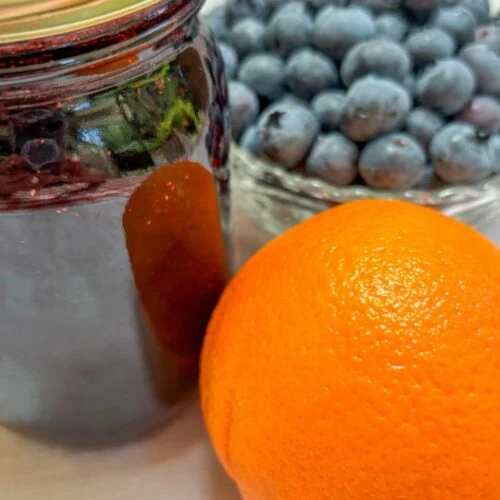
Blueberry Orange Jam with Pectin
Equipment
- 8 Half-pint canning jars, bands, and lids
- 1 Boiling water canner
- 1 Round potato masher
- 1 Microplane zester optional, but it makes grating the zest a breeze
- 1 Mini chopper food processor optional, but much less messy for chopping up the oranges
- 1 colander
- 1 Small metal saucepan with a lid
- 1 Large, non-reactive stockpot
- 1 Set of canning tools optional, but these sure have made canning easier
- 1 Large ladle
- 1 Wooden spoon
Ingredients
- 5 cups fresh or frozen blueberries
- 6½ cups granulated sugar
- 2 medium seedless navel oranges to make 1.5 cups chopped oranges and zest
- 2 tablespoons lemon juice fresh or bottled, either is fine
- 1 1.75-ounce box powdered pectin
Instructions
- Measure out the sugar in a mixing bowl so it will be ready to add to the blueberry orange jam mixture all at once when needed.
- Measure out the fresh or frozen blueberries in a colander. Rinse and drain.
- Mash blueberries in a large, non-aluminum pot and set aside.
- Zest the two oranges and add the zest to the blueberries in the pot.
- Be careful not to zest the white pith underneath the outer rind. Peel the oranges, discard the peels, and finely chop the orange pieces in a food processor. Use the pulse setting.
- Measure 1 and 1/2 cups of the orange pulp and add it to the pot containing the mashed blueberries. If you have slightly less than 1 and 1/2 cups, that’s okay.
- Add the powdered pectin and lemon juice to the pot, then bring to a boil, stirring frequently.
- Add the pre-measured sugar all at once and continue to heat the mixture.
- Bring it to a full rolling boil over high heat, stirring constantly. Boil hard for one minute. Remove from heat.
- Using tongs, if you have them, lift hot jars out of hot water. I usually place mine in the sink.
- Bring the pot of hot jam over and place it next to the jars on a hot pad, trivet, or wooden cutting board to protect the counter.
- Place the jar funnel, if using, on top of each jar before filling it.
- Ladle the hot jam into one hot jar at a time
- Leave 1/4-inch head space in each jar. Wipe jar rims with a clean, damp cloth. Attach lids. Adjust until they are fingertip tight.
- Place jars (using a jar-lifter, if you have one) in the hot water bath in the canner. Water should cover the jars by at least one inch.
- Bring the water to a boil and process the jars for 10 minutes (15 minutes for altitudes above 1,000 feet).
- Process in a boiling water canner for 10 minutes (15 minutes at 1,000 to 6,000 feet; 20 minutes above 6,000 feet).
- When processing is done, remove the jars (again using a jar-lifter, if you have one) and place on a towel to absorb the drips and to cool.
- If all has gone as it should, you should hear the jars seal as they cool. When they are cool, press the center of each lid. They should not flex.
- Label and store the jars in a cool, dry place. The quality is best if used within 12 months. Refrigerate any jars once opened.
Notes
Looking for Other Ways to Use Blueberries?
If you have an abundance of blueberries, you may want to try making easy blueberry lime jam. Since I am always on a quest to make good use of the berries in the freezer, I also like to make simple blueberry syrup. For instant gratification of your sweet tooth, you could also try making berry gelato, blueberry cobbler, blueberry hand pies, blueberry lemon scones, blueberry cream cheese pie, or blueberry rhubarb crisp. I’m constantly adding to my list of favorite ways to use fresh or frozen blueberries.
Other Canning Ideas
Homemade canned goods make excellent gifts for the holidays or for gift baskets any time of the year. If you are a fan of home canning, in addition to this blueberry orange jam you might want to try making canned blackberry syrup, raspberry orange jam, or canned raspberry syrup. If you like canned jam, you could make some orange rhubarb, seedless raspberry, blueberry lemon, or raspberry blueberry jam. Looking for a way to use an abundant apple harvest? Make some delicious canned applesauce. There are many possibilities!
More Food Inspiration
It’s always nice to have a plan when it comes to meals. If you’re looking for a way to get more organized with your meal planning efforts, I’ve got something for you. Free, editable meal planners! The templates can be used over and over, as often as you need them. You can make as many duplicates as you like, and you’ll be able to save old meal plans for future reference.
I hope it simplifies things for you.
Get my digital, editable, printable templates!
I hope you enjoy making blueberry orange jam made with pectin, and may all of your canning endeavors meet with great success!
Lisa Mitchell is a wife, mom, and school librarian who likes to create and share recipes, often using fresh ingredients from her family’s small Pacific Northwest farm. To learn more about what this website has to offer, click on over to the Welcome page.
Want more great garden, food, or travel ideas? Follow FluxingWell on Pinterest, Facebook, Instagram, and X for the latest posts, tips, and inspiration.

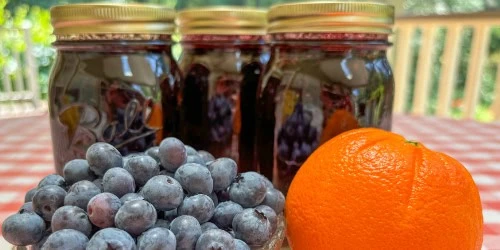
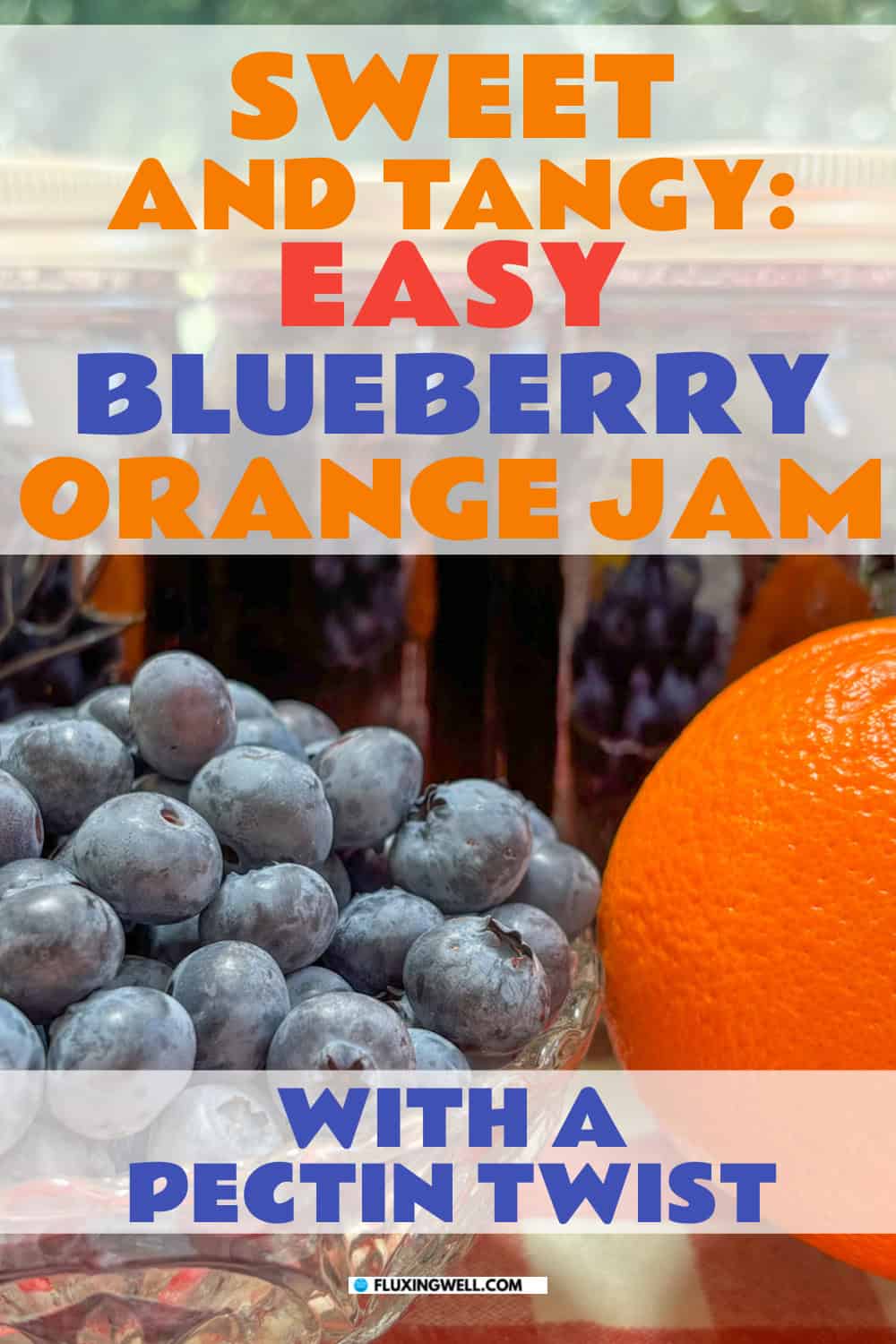
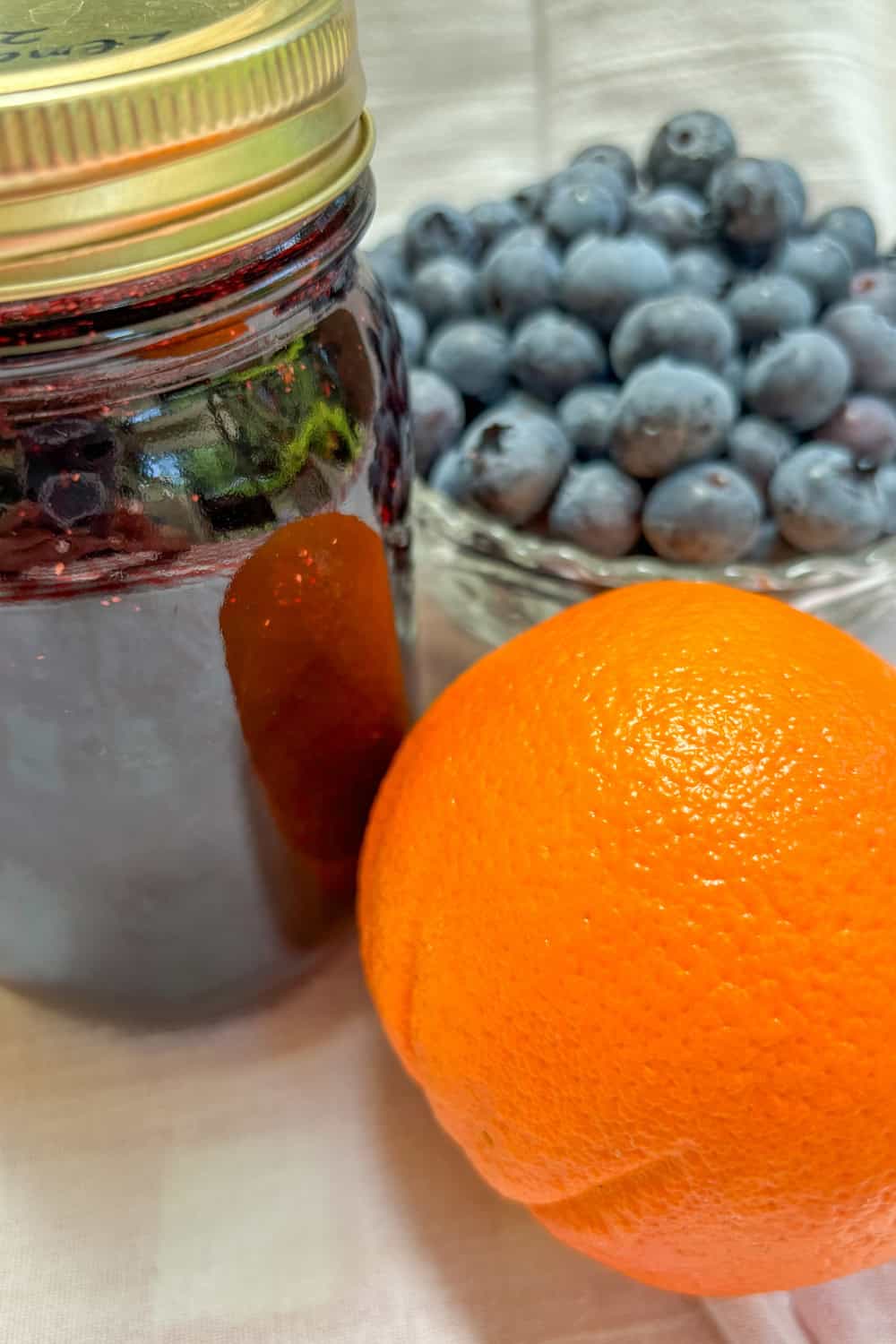



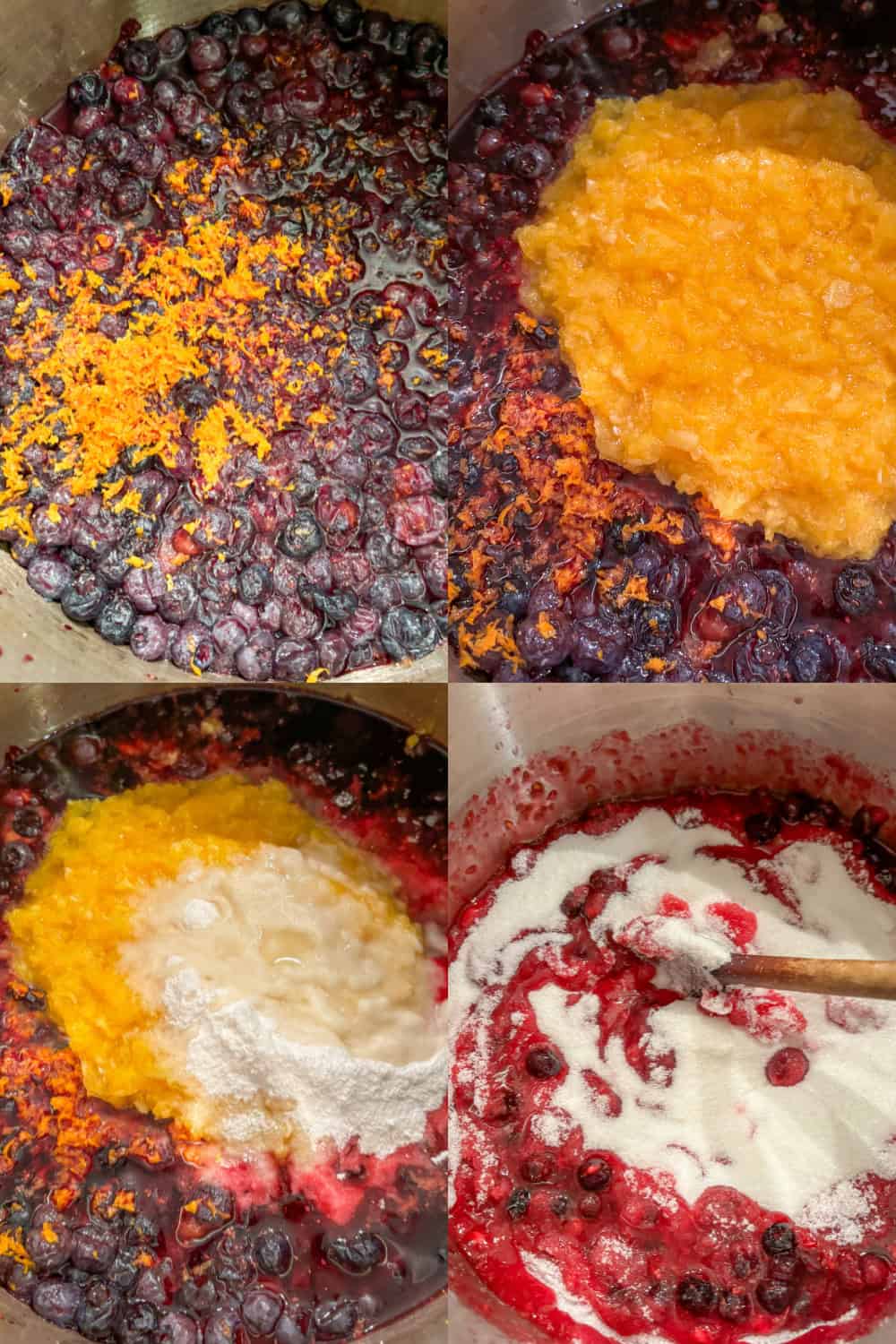
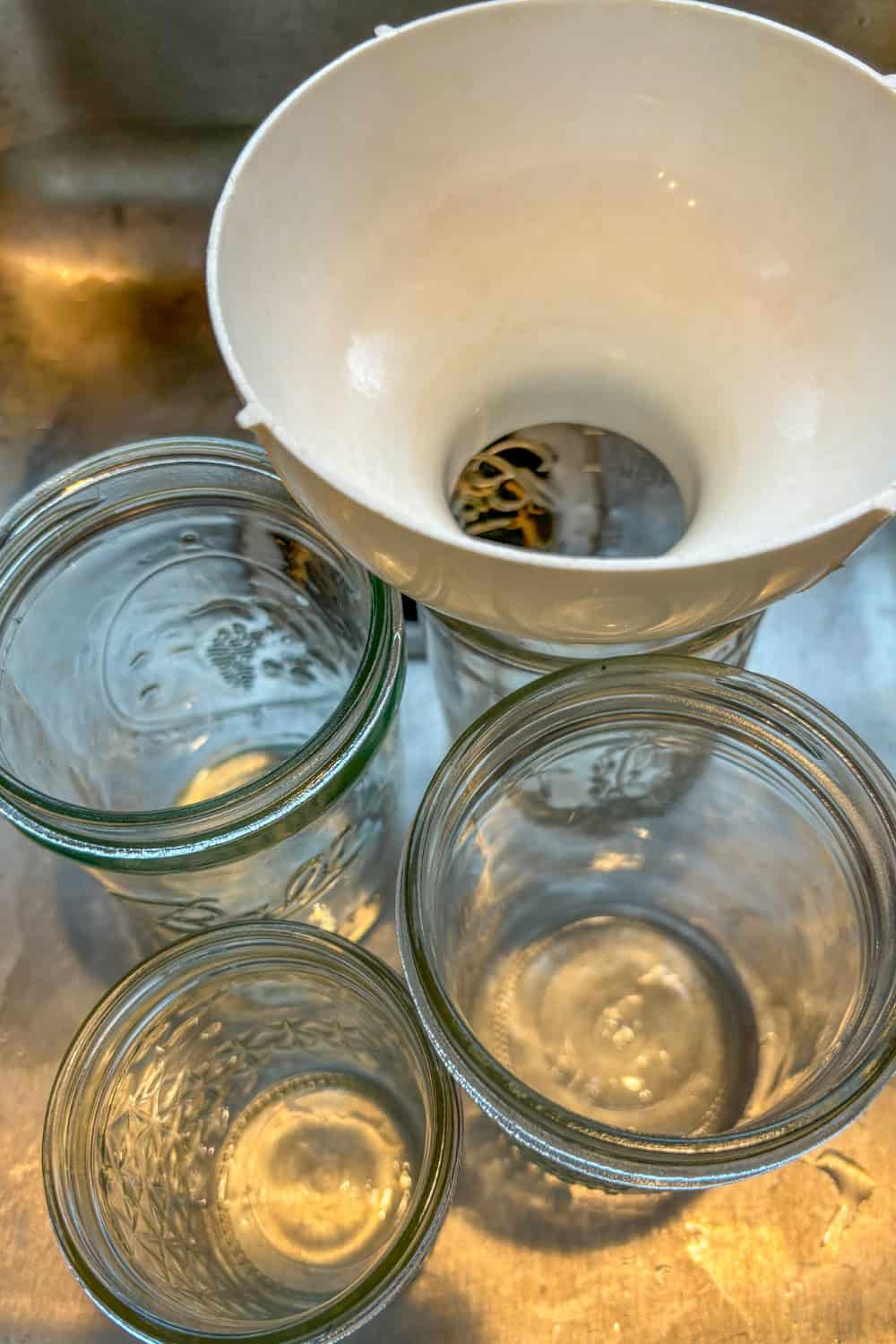



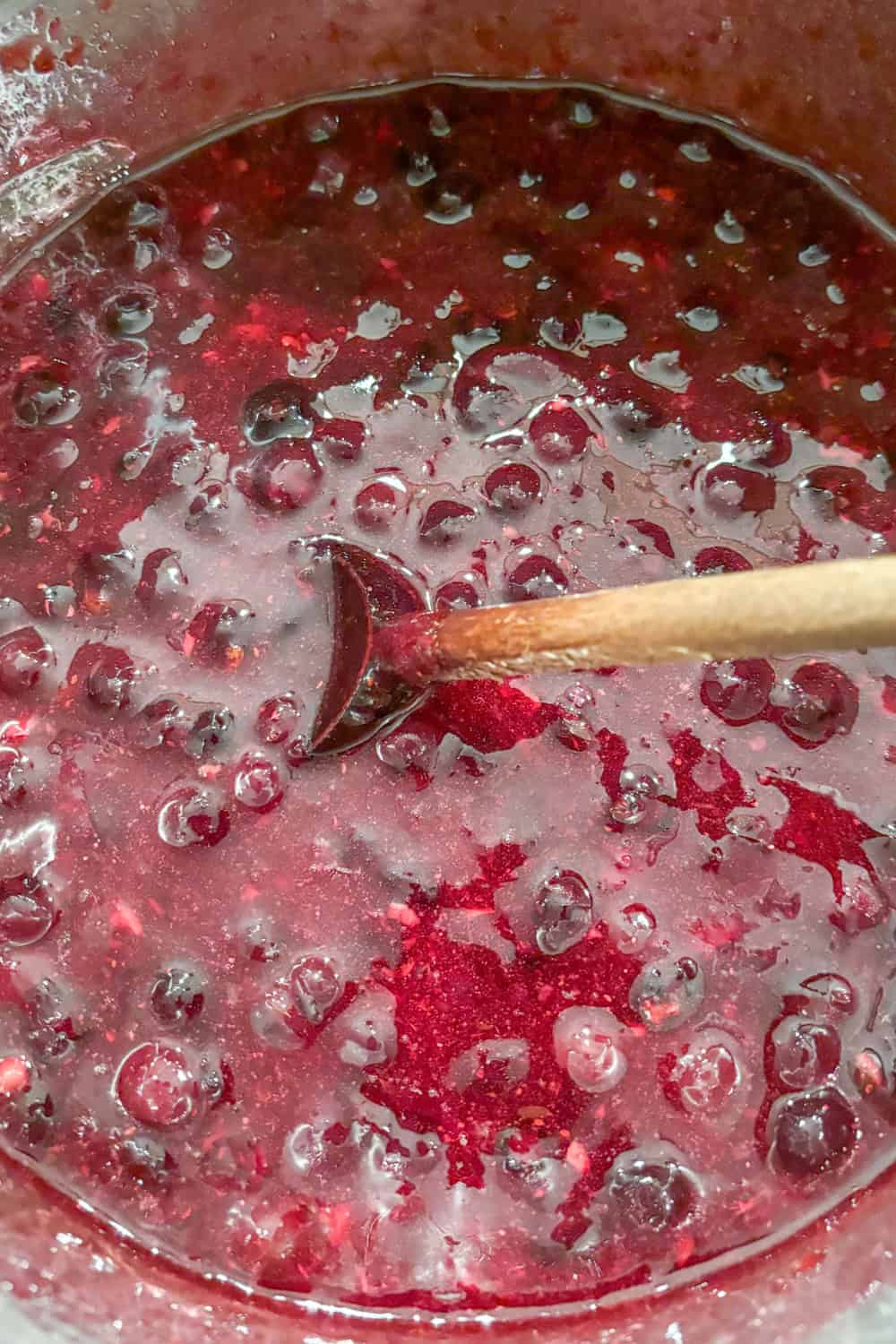

I absolutely love this blueberry orange jam recipe. The fact that it is easy to prepare makes it even more attractive in my opinion.
Thank you! I hope you get to try making this blueberry orange jam recipe.
Great blueberry orange jam recipe! I am always looking for canning ideas.
Excellent! I love sharing canning ideas, especially when they are as easy to make as this blueberry orange jam.
I love blueberries and citrus fruits together, so I think your blueberry orange jam recipe is perfect! Thanks for giving such careful instructions.
You are most welcome! Yes, the blueberry orange flavor combination is a favorite.
As someone who loves canning, I find this Blueberry Orange Jam recipe a must-try! The combination of sweet blueberries and zesty orange sounds like a delicious twist on the classic. I appreciate the detailed instructions, especially using pectin for perfect consistency.
Oh, I appreciate your kind words. I hope this blueberry orange jam is a great addition to your canning recipe collection.
Thank you for this tasty blueberry orange jam recipe. I have a lot of blueberries, so this canning recipe is just what I was looking for.
I’m so glad you like the recipe for blueberry orange jam. The added pectin makes a nice set. Happy canning!